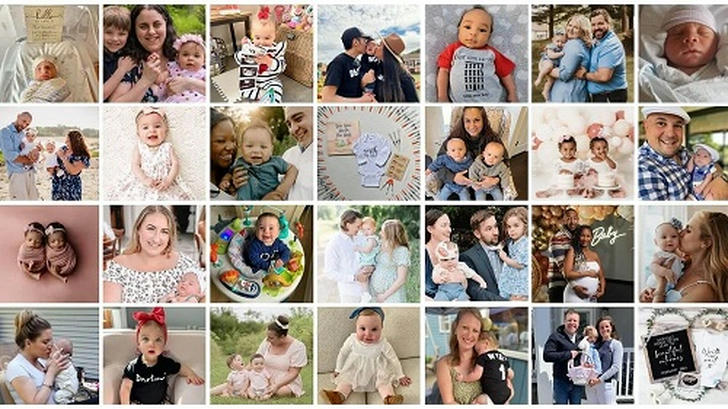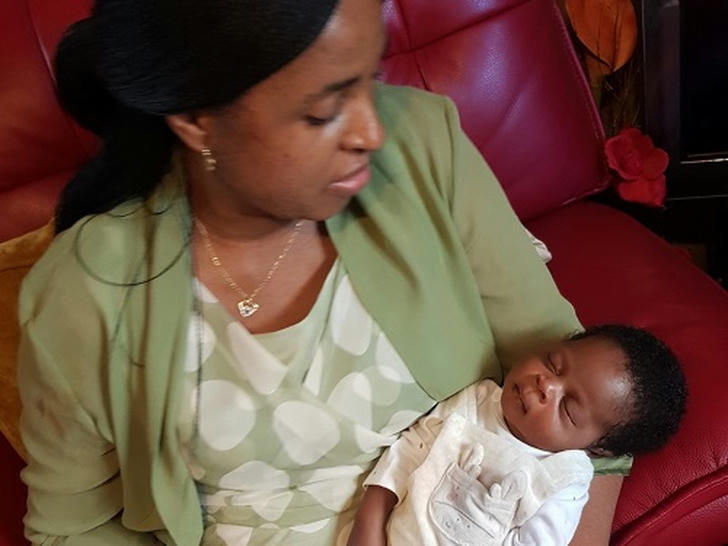Fulfill your dream of becoming a parent!
Dreaming of expanding your family?
You've come to the right place! Today, one in eight women in the United States experience this—most of whom never imagined having a child would be so difficult. Solutions to infertility are often out of reach due to the high cost of assisted reproduction, and financial difficulties prevent many from becoming parents.
If you're wondering, "How can I afford this? Is my only option to pay for it all out of pocket? Can I get any financial help?" regarding the cost of treatment, know that you are not alone.

So take a deep breath and keep reading to learn about grant programs to help you achieve your goal of building a family! Thankfully, there are many organizations that offer IVF grants that can fully or partially fund your treatment, helping to make fertility treatment more affordable for your family.
Some trusted organizations and services to help understand what options you currently have:
•Nest Egg Foundation
This Connecticut-based nonprofit provides financial assistance for IVF treatments for those who are unable to build a family due to financial hardships. The grant will cover up to $20,000 in treatment costs.
•Compassionate Care Program
The Compassionate Care Program provides income-based savings to eligible patients. Eligible patients can save 25% to 75% on their out-of-pocket costs for EMD Serono fertility medications.
•Baby Quest Foundation
The Baby Quest Foundation provides financial assistance through fertility grants to those who would otherwise not be able to afford the high costs of IVF, gestational surrogacy, egg and sperm donation, egg freezing, and embryo donation. Grants are awarded twice a year in varying amounts.
•Tinina Q. Cade Foundation
The Tinina Q. Cade Foundation's Family Building Grant is an annual award that provides families with a grant of up to $10,000 to assist with expenses associated with infertility treatment or domestic adoption. Family Building Grants can take the form of a cash award, paid directly to a clinic or agency, or a pharmaceutical award, which is sent to the recipient's fertility clinic.
•Fertility Hope
Fertility Hope's national grants help couples overcome the financial hardships of fertility treatment and can be used to cover the cost of in-clinic medical procedures or costs associated with the adoption process. Typically, grants are awarded twice a year.
•Parental Hope
Parental Hope offers two types of family-building grants to those struggling with infertility. The IVF grant covers the full cost of a standard IVF cycle. The FET grant covers the full cost of one frozen embryo transfer.
•Starfish Infertility Foundation
Founded by a couple struggling with the high costs of infertility, this nonprofit foundation offers three different grants. The grants can be used to receive treatment at any Society for Assisted Reproductive Technology (SART) member fertility clinic.
Success Story I:
Erika and Curtis, who live in California, are Baby Quest IVF treatment recipients. They say: "After spending a ton of money out of pocket to no avail, I decided I had to find a way to get help. A quick Google search led me to Baby Quest, an amazing foundation that offers financial assistance. Finding Baby Quest was a God send, and not just because of the money. During our last and only successful IVF (after two failed attempts), Baby Quest helped pay for PGD testing. On top of that, we have met the most incredible community. I immediately felt empowered by the women around me. Whenever I felt alone, I reached out to the Baby Quest group and instantly felt stronger. Even though I am now pregnant, I have struggled to believe that something positive is going to happen for us, and I have held my breath, fearing that it will break our hearts again. I have been relying on the Baby Quest community to help me through these emotions. They constantly remind me that I am not alone."

Success Story II:
Mary is a 30 A lovely lady in her 60s who had been trying to conceive naturally for years without success. After 4 failed IVF attempts elsewhere, and after spending a lot of money and time, she finally chose to look for an organization that offered an IVF subsidy program for treatment, and they chose the Tinina Q. Cade Foundation.
"My husband and I got married in 2005. We had been trying to conceive naturally for years but had several miscarriages. I also had uterine fibroids so I had surgery to remove them but it didn't work. We decided to seek help so we went to a well-known fertility clinic and started IVF. We chose their three-cycle package hoping it would give us a better chance of getting pregnant but I never did. My husband and I were very disappointed until one of my colleagues told me about you and she highly recommended you. We felt very well taken care of during the treatment and it made a huge difference, the doctors and staff were always concerned about how the treatment was going. Here, all the staff went out of their way to make us feel supported: nurse Angela, Yemi, Dr. Kaur, Mr. Ojha, Jo at the reception. Everyone was so nice to us. When we found out I was pregnant during the second round, I was really scared until I completed the first trimester. Everyone was so caring and they looked after me throughout the process. We have a lovely little boy and I am really excited and grateful to the Tinina Q. Cade Foundation for providing a high grant for my treatment to make it possible for me to have my own child. Thank you so much."
•••
Conclusion
These organizations provide hope and opportunities for families facing infertility challenges, breaking down economic barriers and making this advanced fertility technology more accessible. Although the application process is complex and the eligibility requirements are strict, this support can bring new hope to many families. If you or someone you know is experiencing fertility issues, it is recommended to learn about IVF subsidy programs as soon as possible and actively seek professional help to realize the dream of having a family.
